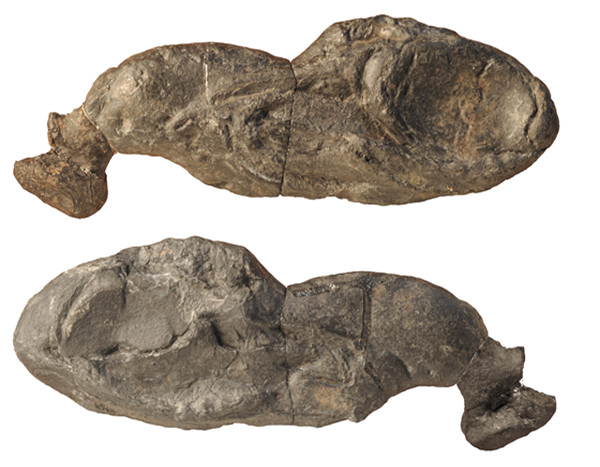
by Mary Caperton Morton Tuesday, August 19, 2014

The well-preserved fossil of Ozarcus mapesae from two different lateral views. Credit: AMNH/F. Ippolito.
Sharks are thought to have one of the most consistent body plans in the animal kingdom; the formidable predators seem to have remained roughly the same for more than 400 million years. But a new study, published in Nature, suggests that sharks are not the unchanging, “living fossils” that paleontologists once thought.
Because shark skeletons are made of cartilage, their fossils are rare, fragile and often found in flattened fragments, making it difficult to tell how their bodies evolved over time. But a new fossil found in Arkansas of a meter-long shark known as Ozarcus mapesae was preserved in a nearly three-dimensional state, giving researchers a rare glimpse into the organization of the arches that make up the jaws and gills of the 325-million-year-old specimen.
A high-resolution CT scan of the shark’s skull revealed that the “living fossil” didn’t look so much like a modern shark as it did like a modern fish, indicating that sharks have indeed evolved over time. The finding calls into question long-held theories that shark gills were ancient structures that predated modern fish.
“Sharks are traditionally thought to be one of the most primitive surviving jawed vertebrates. And most textbooks … say that the internal jaw structures of modern sharks should look very similar to those in primitive shark-like fishes,” said lead author Alan Pradel of the American Museum of Natural History in New York City in a statement. “But we’ve found that’s not the case. The modern shark condition is very specialized, very derived, and not primitive.”
© 2008-2021. All rights reserved. Any copying, redistribution or retransmission of any of the contents of this service without the expressed written permission of the American Geosciences Institute is expressly prohibited. Click here for all copyright requests.